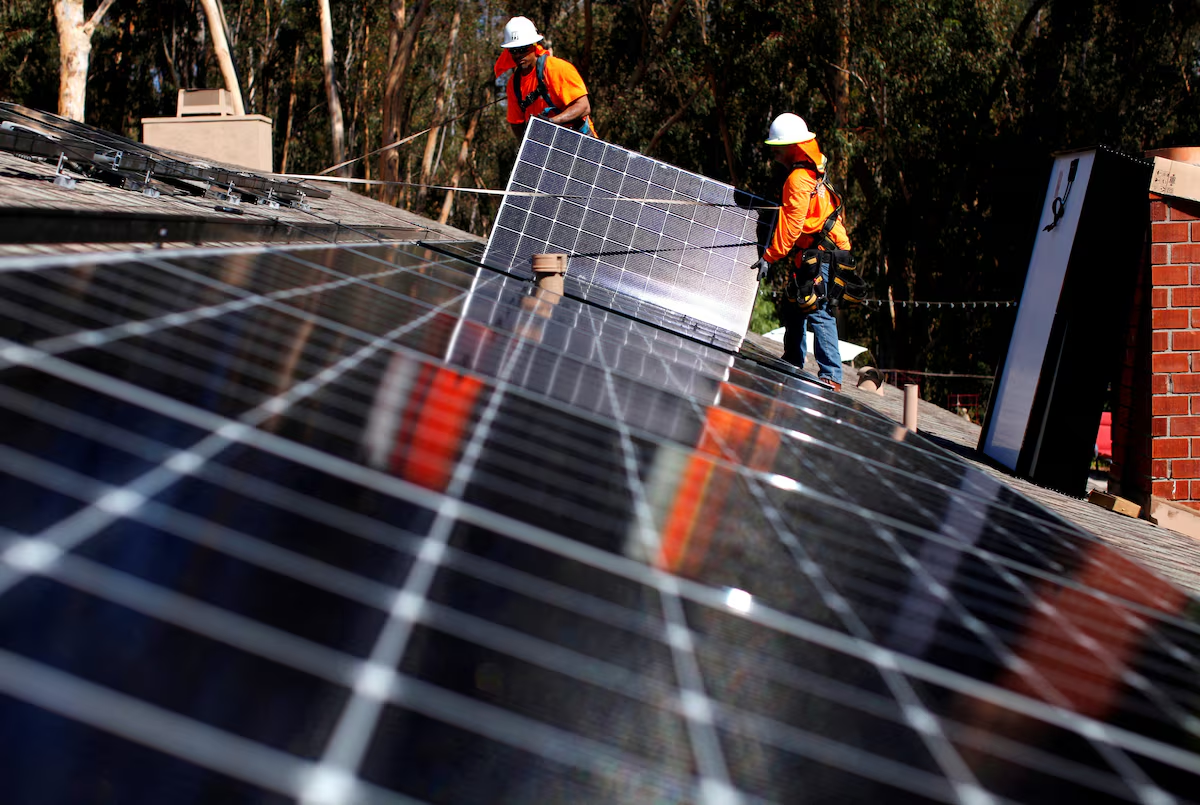Last week, Massachusetts-based New Leaf Energy laid off 41 of its 217 employees. CEO Dan Berwick stated that the move was necessary to maintain stability in the face of federal tax credit cuts.
They are among the first solar energy companies to reduce staff following the passage of the Spending Cuts and Tax Relief Act, also known as President Donald Trump's "Big Beautiful Act", earlier this month.
 |
Baker Electric employees install solar panels on a roof in Scripps Ranch, San Diego, California, USA, 14/10/2016. Photo: Reuters |
Baker Electric employees install solar panels on a roof in Scripps Ranch, San Diego, California, USA, 14/10/2016. Photo: Reuters
Under the Inflation Reduction Act (IRA) enacted by former President Joe Biden, households installing solar energy systems can receive a federal tax credit equivalent to 30% of the total installation cost until 2032. However, under the "Big Beautiful Act", projects must begin construction by 7/2026 to qualify for this incentive.
While companies planned to expedite projects before the deadline, last week, Mr. Trump asked the Treasury Department to guide businesses on meeting the "construction start" criteria to prevent tax evasion. He also signed an executive order allowing retroactive application to clean energy projects.
"Doing business under Mr. Trump is like trying to operate while bouncing on a springboard," said Paula Mints, founder and chief economist at SPV Market Research.
Faced with these new policies, many businesses in the sector have had to downsize. In addition to New Leaf Energy, Pine Gate Renewables, a developer of large-scale solar and storage projects in North Carolina, reportedly laid off 15% of its staff. However, they declined to comment on this information.
Earlier, CEO Will Etheridge of Southern Energy Management also said he was considering laying off 50 to 55 employees. Having trusted the stability of solar incentives, he left his job to start his own business with a loan from his grandmother and a mortgage on his house. Now, he is forced to diversify his business to survive.
Bloomberg, citing research firm Enverus, reported that once developers lose the tax credit, only 30% of planned solar projects can offer competitive prices and "are expected to survive." This figure is 57% for wind power projects.
The Solar Energy Industries Association estimates that about 300,000 people in the field will lose their jobs in the next few years. In Massachusetts alone, the projected job losses are estimated at 6,100. Frank Callahan, president of the Massachusetts Building Trades Council, said this "big, beautiful" act will eliminate thousands of job opportunities. He added that some offshore wind projects have stalled, and many others may be shelved.
"This appears to be the biggest job-killing act in American history," Callahan said.
According to research firm Energy Innovation, this act will reduce US power capacity by 300 GW, just as electricity demand is increasing for the first time in two decades due to the growth of data centers and artificial intelligence technology.
Bao Bao (according to PV Magazine, NPR)












